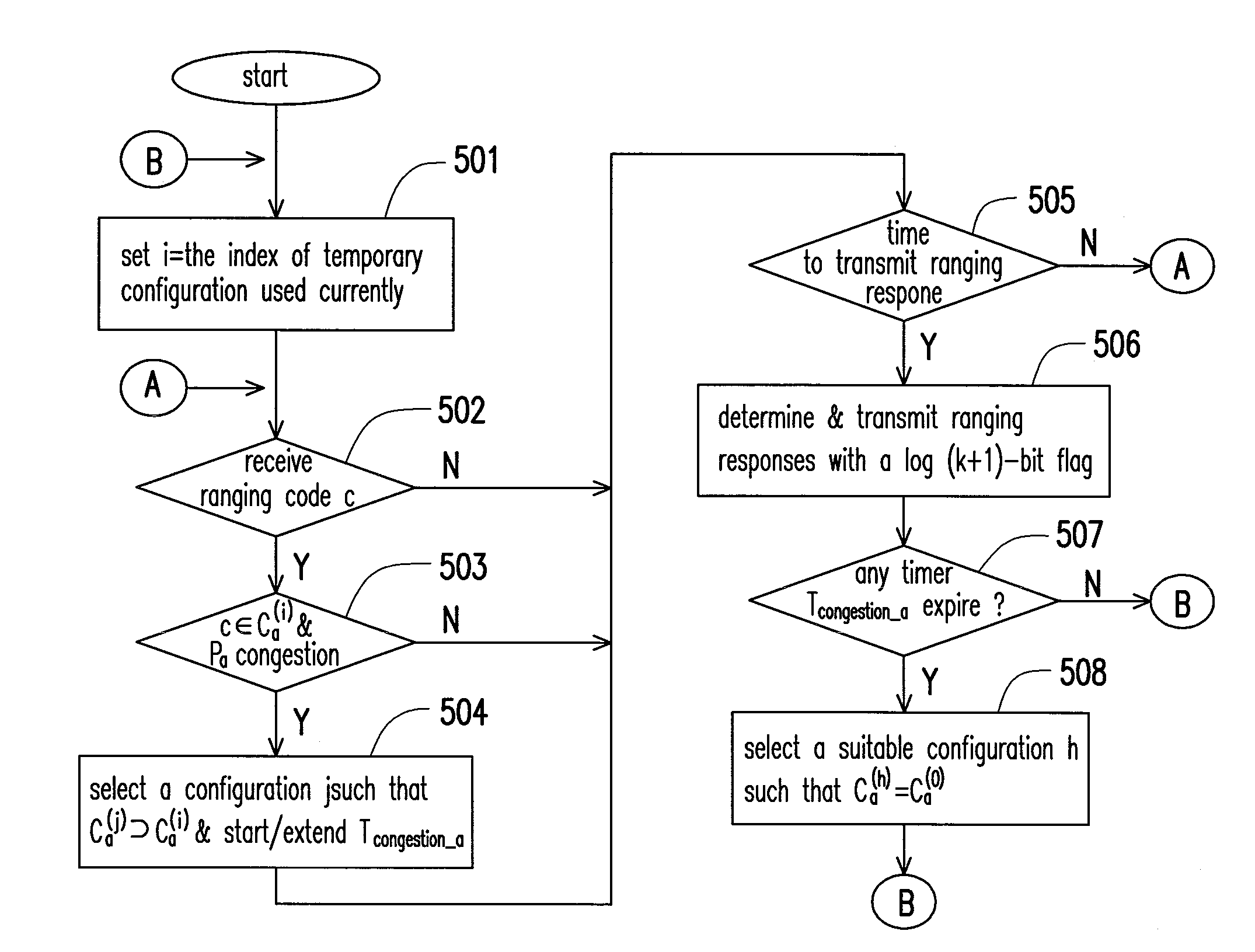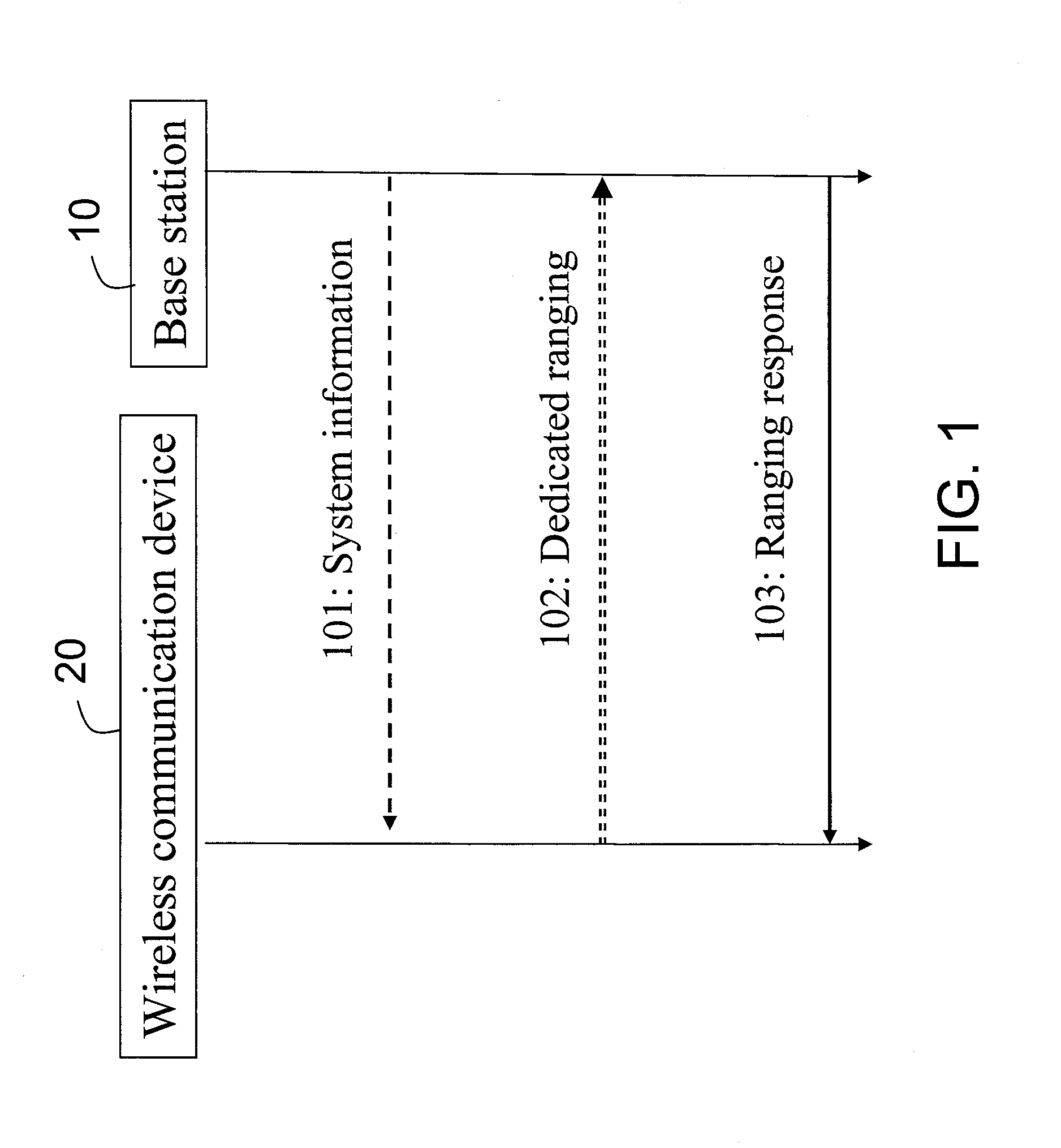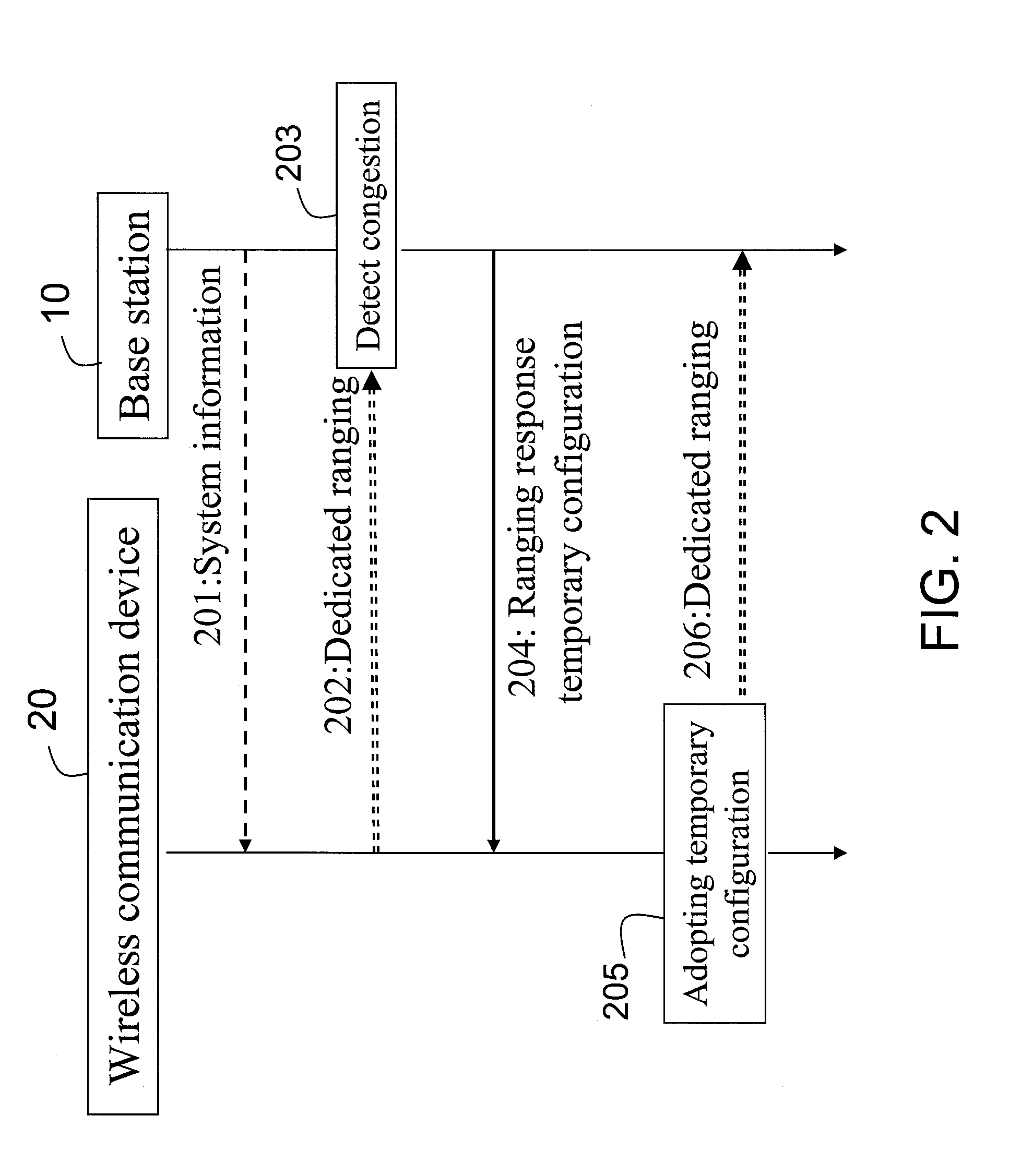Prioritized random access method
a random access and priority technology, applied in the field of priority random access methods, can solve the problems of contention and collision, consuming extremely low operational power over long periods of time, and not ensuring that a high priority random access is served earlier
- Summary
- Abstract
- Description
- Claims
- Application Information
AI Technical Summary
Problems solved by technology
Method used
Image
Examples
first exemplary embodiment
[0032]In the first exemplary embodiment, there are five major proposals for the prioritized random access method. The first proposal is “Dedicated ranging (random access) codes for each priority level”; the second proposal is “Detecting congestion of ranging (random access) codes reserved for some priority level”; the third proposal is “Temporary configurations of code partition”; the fourth proposal is “Dynamically and temporarily changing configuration to increase or decrease ranging codes for some priority level”; the fifth proposal is “Prioritized contention resolution”.
[0033]In the first proposal, in order to provide prioritized CDMA ranging (random access), each priority level is associated with a set of dedicated ranging (random access) codes, which are just reserved for the priority level. It is assumed that all purposes of ranging (random access) attempts except initial ranging (random access) and handover ranging (random access) are classified into n priority levels, P1, P...
second exemplary embodiment
[0068]According to the contention-based random access procedure specified in LTE, when multiple UEs select the same random access resource (i.e., the same preamble, the same PRACH, and same subframe), these UEs can use the same UL grant bandwidth given by the eNB in RAR to transmit RRC Connection Request message (also known as, Msg3), thereby resulting in collisions. In order to resolve contention, UE sends its identifier to the network in Msg3. Besides, non-adaptive HARQ is adopted for Msg3 transmissions to increase the probability of successful decoding. If the eNB successfully receive an Msg3 from some UE, it echoes back the received UE identifier to resolve the contention. The UE, which has received its ID, continues the transmission while other UEs will back off and try again.
[0069]The maximum number of HARQ transmissions for Msg3 is configured by the parameter maxHARQ-Msg3Tx in SIB2. If the parameter maxHARQ-Msg3Tx is also applied for MTC devices (also known as, M2M devices), ...
PUM
 Login to View More
Login to View More Abstract
Description
Claims
Application Information
 Login to View More
Login to View More - R&D
- Intellectual Property
- Life Sciences
- Materials
- Tech Scout
- Unparalleled Data Quality
- Higher Quality Content
- 60% Fewer Hallucinations
Browse by: Latest US Patents, China's latest patents, Technical Efficacy Thesaurus, Application Domain, Technology Topic, Popular Technical Reports.
© 2025 PatSnap. All rights reserved.Legal|Privacy policy|Modern Slavery Act Transparency Statement|Sitemap|About US| Contact US: help@patsnap.com



